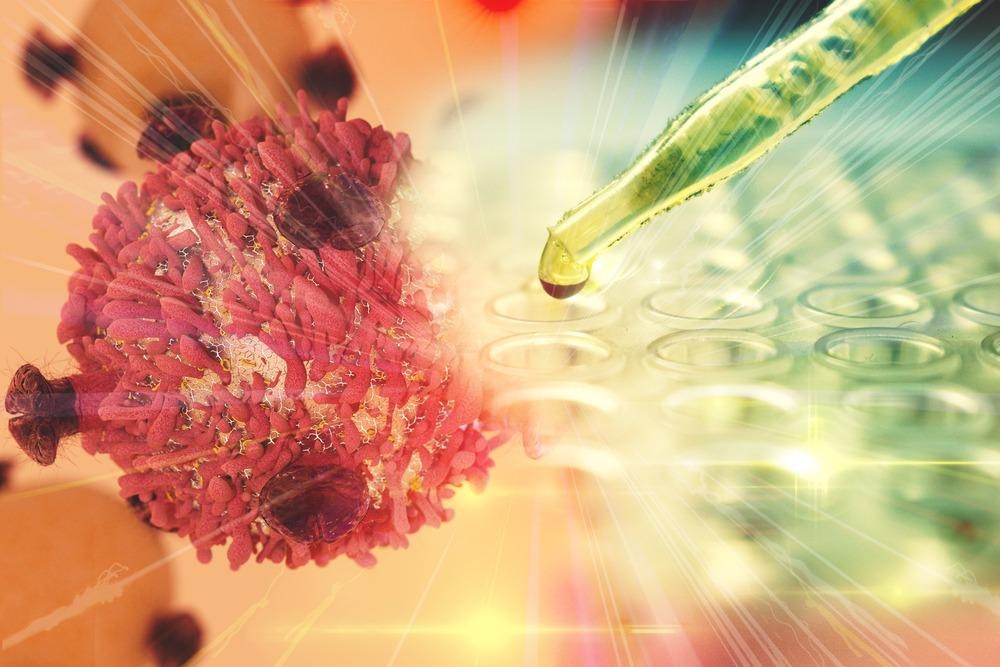A new study, which is forthcoming in Materials Today: Proceedings, has focused on highlighting nanotechnology-based drug delivery systems and targeted delivery approaches for anticancer medication. The authors highlighted the importance of developing plant-based nanoparticles that can be explored to develop novel anticancer chemotherapeutics.

Study: Targeted delivery approaches for synthesis of plant based nanoparticles as anticancer chemotherapeutics. Image Credit: CI Photos/Shutterstock.com
Cancer Treatment and Nanotechnology
To date, one of the biggest causes of death around the world is cancer. Some of the common drugs used in cancer therapy are alkylating agents, cytotoxic antibiotics, antimetabolites, and steroidal hormones. Many anticancer medications are antiproliferative and, thereby, damage DNA and kill cells. Additionally, several side effects, including decreased wound healing, bone marrow depression, growth retardation in young individuals, and alopecia, have been associated with anticancer treatments. It is, therefore, crucial to develop effective anticancer medicines with minimal side effects.
Researchers have linked some of the factors associated with most clinically utilized anticancer medicines to adverse side-effects. These factors include low water solubility, unsuitability for oral administration, short biological half-life, and poor specificity. Nanotechnology has immensely benefitted cancer diagnosis and treatment. Scientists have indicated that the enhanced permeability and retention (EPR) phenomenon has helped to passively target tumor cells. In this system, nanocarriers laden with lethal drugs can target the tumor tissues in a well-designed nanoparticulate system.
Researchers have used nanotechnology platforms for chemotherapy, where well-established conventional anticancer medications, packed into a nano-sized carrier, are delivered to the targeted sites. One of the main advantages of this system is that nanocarriers, owing to their small size, can penetrate through smaller capillaries and are taken up by cells. These cells permit drug accumulation at the target sites. Additionally, biodegradable materials for nanoparticles enable sustained drug release in the specific site over days or even weeks. Scientists have also indicated one of the disadvantages of this method: the high cost. Furthermore, owing to the small size of the nanomaterials, it can cause inhalation problems and other health hazards.
Targeted Drug Delivery and Plant-Based Nanoparticles
Researchers have developed metallic nanoparticles, particularly silver nanoparticles, for cancer treatment. Silver nanoparticles possess unique optoelectronic and physicochemical features and can be synthesized easily. Additionally, several studies have revealed that silver nanoparticles contain antimicrobial and anti-neoplastic properties.
Silver nanoparticles are synthesized via different physical and chemical methods; however, such methods are expensive and consume a significant amount of energy. Synthesis of silver nanoparticles via chemical reduction involves utilizing harmful chemicals and sometimes poses toxicity threats. Interestingly, scientists discovered that plant extracts are more efficient compared to microbial extracts in the green synthesis of metallic nanoparticles. One of the advantages of using plant extracts is that the risk of microbial contamination or infection throughout the synthesis process is much reduced.
Synthesis of Different Nanoparticles and Cancer Treatments
Silver salts are the main source of silver ions. During the bioreduction process, plant extracts act as reducing agents to transform the ions into atoms, followed by nucleation in tiny clusters that expand into particles. The type of reducing agents determines the shape and size of nanoparticles. To avoid aggregation and obtain smaller nanoparticles, capping agents are used.
Carbon nanotubes are small, cylindrical-shaped carbon-based nanoparticles that can absorb near-infrared light wavelengths while passing through cells without harming them. When carbon nanotubes are exposed to a beam of near-IR light, the nanotube’ electrons are excited and the excess energy is released in the form of heat, which can thermally kill cancer cells in vivo.
As cancer cells have numerous folate receptors on their surfaces, nanotubes coated with folate molecules can easily target diseased cells. Carbon nanotubes can deliver therapeutic molecules or drugs to cancerous cells. Interestingly, researchers functionalized these nanoparticles with specific functional groups to manipulate their physical and biological properties.
Dendrimers are sphere-shaped macromolecules that can encapsulate hydrophobic medicinal ingredients. These nanoparticles are divided into three sections: the central core, branching units, and terminal functional groups. Primarily, the core determines the environment of nanocavities and their solubilizing characteristics. Dendrimers can be synthesized in various sizes and shapes, with multiple polar and non-polar layers. Their high-water solubility, monodispersity, and capsulation ability are widely used for drug delivery.
Conclusion
Researchers have highlighted that various plant extracts have been used in the green synthesis of metallic nanoparticles, particularly gold and silver nanoparticles. However, not many methods are available that are related to the plant-based synthesis of carbon nanotubes and dendrimers. As these nanoparticles are widely used in cancer therapy, developing effective formulation targeting methodologies for plant-based synthesis is essential.
Reference
Grover, P. et al. (2022) Targeted delivery approaches for synthesis of plant based nanoparticles as anticancer chemotherapeutics. Material Today: Proceedings. https://doi.org/10.1016/j.matpr.2022.03.483
Disclaimer: The views expressed here are those of the author expressed in their private capacity and do not necessarily represent the views of AZoM.com Limited T/A AZoNetwork the owner and operator of this website. This disclaimer forms part of the Terms and conditions of use of this website.